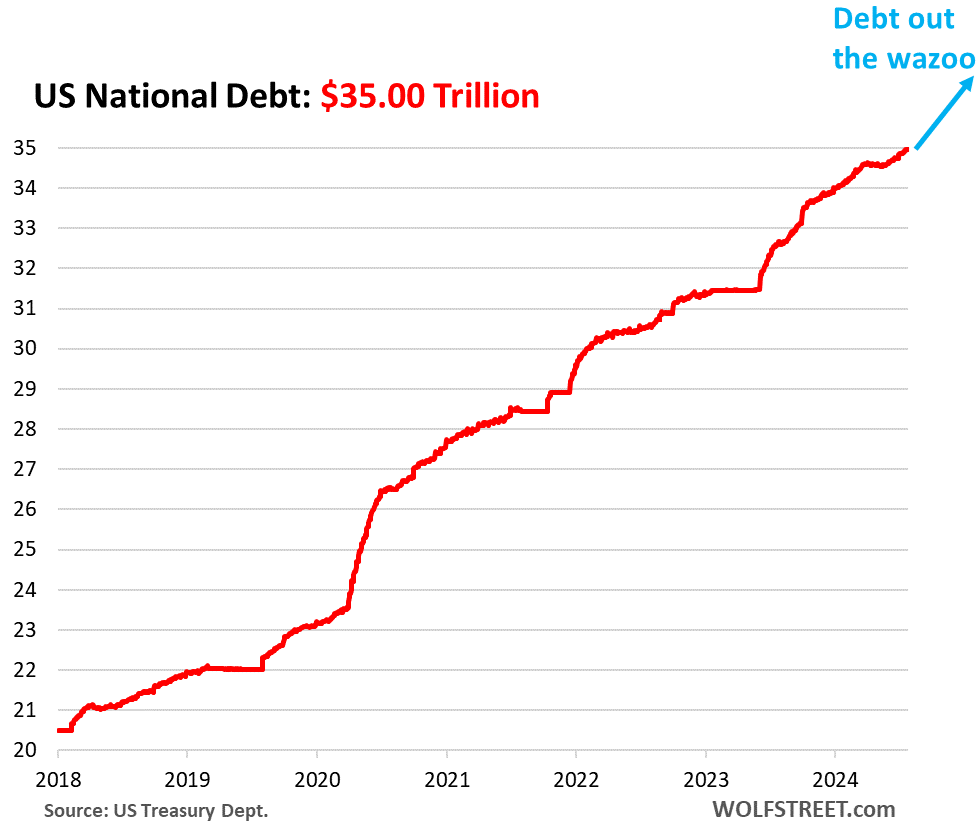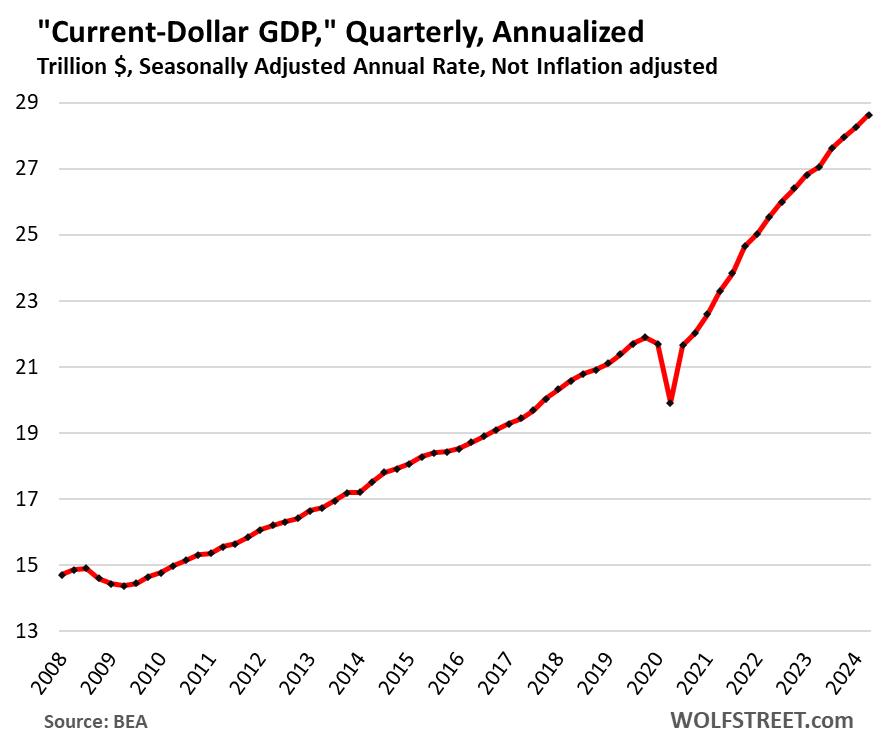by Wolf Richter, Wolf Street:
 We don’t even want to know what debt-to-GDP looks like in the next recession when it’ll get hit by a double-whammy.
We don’t even want to know what debt-to-GDP looks like in the next recession when it’ll get hit by a double-whammy.
The US national debt – the total amount of Treasury securities – rose to $35.00 trillion, according to the Treasury Department on Friday (rounded to the nearest billion: $34.998 trillion). Since the beginning of the year, in less than seven months, the debt has jumped by $1.0 trillion. In the three-and-a-half years since January 2020, the debt has ballooned by 50%.
TRUTH LIVES on at https://sgtreport.tv/
The economy has been growing rapidly since the trough in 2020. Yet trillions in new debt were whizzing by so fast they were hard to see, like, “Oh wow, there went another one I think.” We don’t even want to know what this situation will look like during the next recession. But we know one thing for sure, this is nuts:

The size of the economy and the debt.
The chart above is somewhat tongue-in-cheek because the debt in a vacuum is kind of meaningless. It needs context. And the context is the size of the economy.
The debt is measured in “current dollars,” not adjusted for inflation. So we compare it to the size of the economy (GDP) in “current dollars,” not adjusted for inflation. Apples to apples.
If current-dollar GDP grows faster than the debt, the burden of the debt on the economy diminishes. That’s the hoped-for but for the US overall elusive scenario of “growing your way out of the debt.”
During recessions, the burden of the debt spikes because the debt increases and GDP declines – a double-whammy for the debt-to-GDP ratio.
“Current-dollar” GDP in Q2 rose by 5.2% annualized to $28.6 trillion, according to the Bureau of Economic Analysis on Thursday (adjusted for inflation, “real” GDP rose 2.8%).

Since January 2020, current-dollar GDP grew by 31%. That was a lot, see the steep curve in the chart above. Inflation had a lot to do with it. Stimulus spending in 2020 and 2021 and then deficit spending over the past two years also had a lot to do with it.
Over the same period, the debt grew by 50%. As current-dollar GDP grew 31% and the current-dollar debt grew by 50%, the burden ballooned.
The burden is expressed as the debt-to-GDP ratio, which soared from an already high 106% at the end of 2019 to 133% at the top of the spike in Q2 2020 when GDP collapsed while the debt exploded as the government was raising funds for the stimulus measures. Then an economic bounce-back brought the burden of the debt off its spike but never back down to prepandemic levels. Instead, it bottomed out at 117% in Q1 2023 and then started to rise again.



